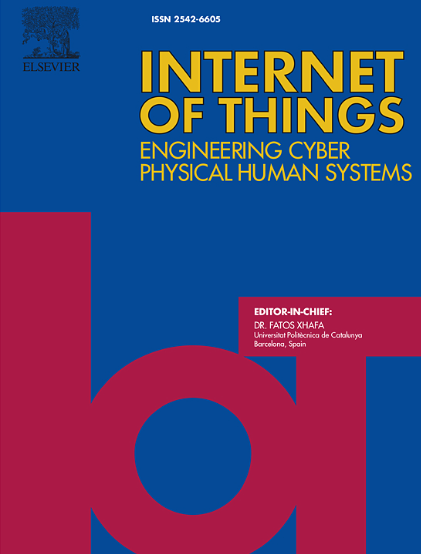用于智能农业的虚拟传感器:支持物联网和人工智能的方法
IF 6
3区 计算机科学
Q1 COMPUTER SCIENCE, INFORMATION SYSTEMS
引用次数: 0
摘要
智能农业依靠精确的环境数据来优化农业实践,空气温度、湿度、降雨、环境光、紫外线辐射和土壤湿度等关键指标在农业决策中发挥关键作用。然而,农业领域的巨大空间覆盖和部署大量物理传感器的高成本构成了重大挑战,特别是对中小型农场。为了解决这些问题,虚拟传感器——基于相关物理传感器数据预测传感器值的机器学习模型——提供了一种经济高效且可扩展的替代方案。在这项研究中,设计和部署了许多基于arduino的物联网设备,配备了各种物理传感器,使用6w波共享太阳能电池板连续充电的锂聚合物电池,以及同步数据记录的实时时钟(RTC)模块。在近三个月的时间里,物联网设备在两个农田上运行。收集的数据构成了评估多个机器学习模型作为虚拟传感器的基础。此外,还探讨了利用开放天气数据开发无硬件解决方案。实验结果表明,虚拟传感器为替代物理传感器提供了一种经济、准确的方法。光梯度增强机成为虚拟传感器最精确的模型,在大多数情况下实现了小于1%的预测误差。这使其成为在资源受限的物联网设备中实现经济高效和数据驱动农业的宝贵工具。本文章由计算机程序翻译,如有差异,请以英文原文为准。

Virtual sensors for smart farming: An IoT- and AI-enabled approach
Smart farming relies on precise environmental data to optimize agricultural practices, with key metrics such as air temperature, humidity, rain, ambient light, ultraviolet (UV) radiation and soil moisture to play a crucial role in agricultural decision-making. However, the vast spatial coverage of agricultural fields and the high cost of deploying numerous physical sensors pose significant challenges, particularly for small and medium-sized farms. To address these issues, virtual sensors – machine learning models that predict sensor values based on data from relevant physical sensors – offer a cost-effective and scalable alternative. In this research, a number of Arduino-based IoT devices are designed and deployed equipped with various physical sensors, a lithium-polymer battery which recharges continuously using a 6 W waveshare solar panel, and a Real-Time Clock (RTC) module that synchronizes data logging. The IoT devices operated across two agricultural fields over a span of almost three months. The data collected form the basis for evaluating multiple machine learning models as virtual sensors. Furthermore, the use of open weather data to develop a hardware-free solution is explored. Experimental results show that virtual sensors provide a cost-effective and accurate method for replacing physical sensors. The Light Gradient Boosting Machine emerged as the most accurate model for virtual sensors, achieving prediction errors of less than 1% in most of the cases. This makes it a valuable tool for enabling cost-effective and data-driven farming in resource-constrained IoT devices.
求助全文
通过发布文献求助,成功后即可免费获取论文全文。
去求助
来源期刊

Internet of Things
Multiple-
CiteScore
3.60
自引率
5.10%
发文量
115
审稿时长
37 days
期刊介绍:
Internet of Things; Engineering Cyber Physical Human Systems is a comprehensive journal encouraging cross collaboration between researchers, engineers and practitioners in the field of IoT & Cyber Physical Human Systems. The journal offers a unique platform to exchange scientific information on the entire breadth of technology, science, and societal applications of the IoT.
The journal will place a high priority on timely publication, and provide a home for high quality.
Furthermore, IOT is interested in publishing topical Special Issues on any aspect of IOT.
 求助内容:
求助内容: 应助结果提醒方式:
应助结果提醒方式:


